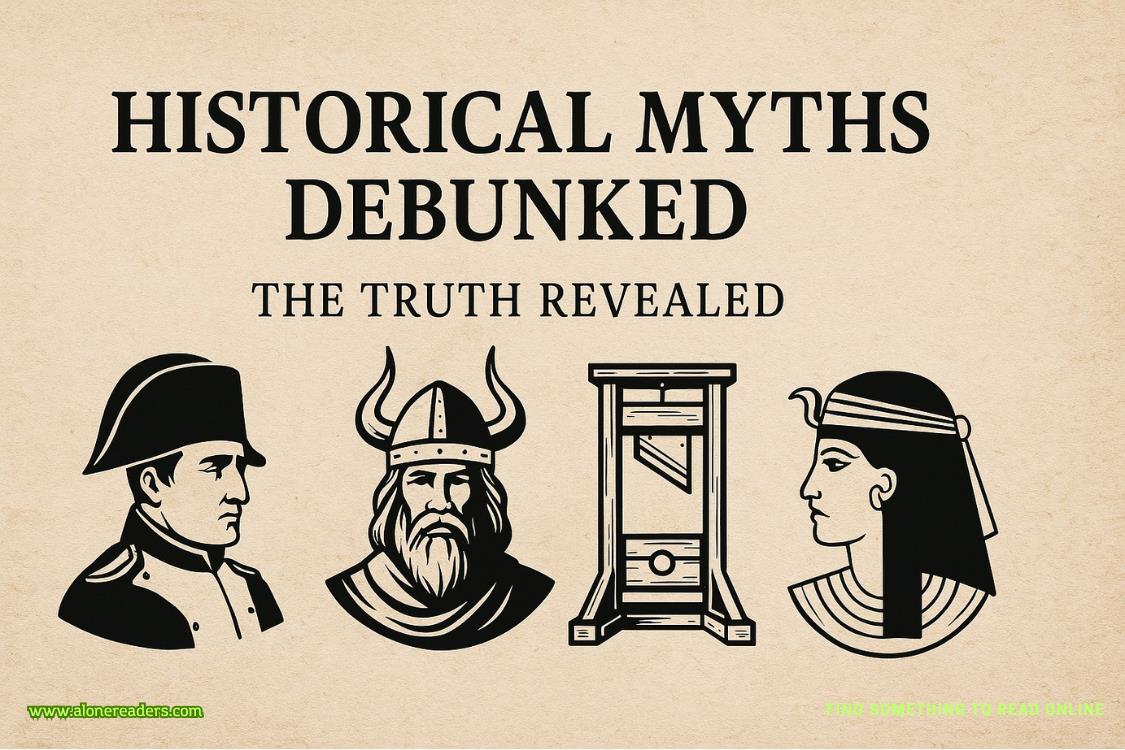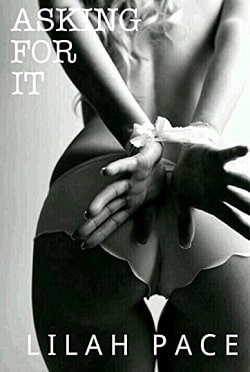“And our company?”
“Look out your window.”
Parish did as he was told and glimpsed an unmarked van bumping along the rutted drive. It stopped in the cottage’s gravel forecourt, and a single figure alighted from the back. Five-foot-nothing, bright green eyes, short dark hair, gray at the temples. The last time Parish had seen him was the night the esteemedTelegraphnewspaper reported that he was dead. In fact, Parish was the one who had brought him the printout of the story from theTelegraph’s Web site. Company were not permitted the use of phones or computers. Cottage rules.
“Parish!” called out the green-eyed man with surprising cheer. “I was hoping you’d be here.”
“Things change slowly down here on the moor.”
“And thank heaven for that.” He surrendered his mobile without Parish having to ask. “You’ll take good care of it, won’t you? I wouldn’t want anyone to get their hands on it.”
With that, the green-eyed man smiled unexpectedly and entered the cottage as though he were returning home from a long absence. When Parish saw him next he was striking out into the moorland, with the collar of his Barbour coat around his ears and the weight of the world on his shoulders. What was it this time? Given his track record, it could be almost anything. Something about his grim expression told Parish that Wormwood Cottage would once again be the setting of a great undertaking. And though Parish did not know it, he was entirely and absolutely correct.
He followed a hedgerowed track down to the hamlet of Postbridge, a collection of farm buildings at the intersection of two roads. There he headed west toward the faint warmth of the sun, which was already hovering just above the empty horizon. He wondered, only half in jest, whether he was following the course Sasha had plotted for him. Or was it Sasha’s legendary accomplice? The Englishman who followed the cricket scores religiously in theTimes, even after he had committed the final act of betrayal. The Englishman who helped Sasha prepare and then insert a mole into the heart of Western intelligence, an agent motivated by a personal devotion to him. The Englishman had lived for a time in the Beirut of old, the Beirut where one heard French while strolling the Corniche. He had known a young woman there, there was a child. Find the woman, thought Gabriel, and he might very well find the child.
But how? The woman had no name or country—at least not in the files Sergei Morosov had seen that night in Sasha’s private dacha—but surely someone must have known of the affair. Perhaps someone attached to MI6’s Beirut station, which was a vital Middle East listening post at the time. Someone who was acquainted with the Englishman. Someone whose career had suffered as a result of the Englishman’s treachery. Someone whose son was now the director-general of MI6 and could access old files without raising any dust. It was possible—possible, Gabriel cautioned himself—he was at long last one step ahead of the great Sasha.
At Two Bridges, Gabriel turned to the north. He followed the road for a time, then swung his leg over a stone fence and hiked across the moorland, up the slope of a tor. In the distance he could see a single car, a limousine, speeding across the barren landscape. He descended the opposite slope and in the dying twilight found a groove in the earth that led him to the door of Wormwood Cottage. The latch yielded to his touch. Inside, he found Miss Coventry, the cook and housekeeper, hovering over several bubbling pots at the stove, an apron around her ample waist.
Graham Seymour was listening to the news on the old Bakelite radio in the sitting room. Entering, Gabriel raised the volume nearly to full. Then he told Seymour about Sasha’s lifelong endeavor. Sasha, he explained, had not worked alone. He had been assisted by an Englishman. There was a woman, and the woman had given birth to a child. The child of treason. The child of Kim Philby...
41
Wormwood Cottage, Dartmoor
He was born on the first day of 1912, in the Punjab Province of British India. His full name was Harold Adrian Russell Philby, but his father—the irascible diplomat, explorer, Orientalist, and convert to Islam, St. John Philby—called him Kim after Kimball O’Hara, the hero of Rudyard Kipling’s novel of Anglo-Russo rivalry and intrigue set in the subcontinent. Kipling’s fictitious character and the young Kim Philby shared more than a nickname. Philby, too, could masquerade as an Indian.
He returned to England at the age of twelve to attend the prestigious Westminster School and in the autumn of 1929, on the eve of the Great Depression, went up to Trinity College, Cambridge. There, like many privileged young Englishmen of his generation, he promptly fell under communism’s spell. He earned an upper second-class degree in economics and a Trinity College prize of fourteen pounds. He used the money to purchase a copy of the collected works of Karl Marx.
Before leaving Cambridge in 1933, he confessed to Maurice Dobb, the Marxist economist and leader of a Cambridge communist cell, that he wanted to devote his life to the Party. Dobb sent him to see an agent of the Comintern in Paris who went by the name Gibarti, and Gibarti placed him in contact with the communist underground in Vienna, which in the autumn of 1933 was a city under siege. Philby took part in the bloody street clashes between Austrian leftists and the fascist regime of Chancellor Engelbert Dollfuss. He also fell in love with Alice “Litzi” Kohlmann, a young Jewish divorcee and committed communist with connections to Soviet intelligence. Philby married her at the Vienna Town Hall in February 1934 and took her back to London, the next stop on his journey into treachery.
For it was in London, on a warm day in June, on a bench in Regent’s Park, that Kim Philby met a charming, curly-haired academic from Eastern Europe who called himself Otto. His real name was Arnold Deutsch, and he was a talent-spotter and recruiter working in Britain on behalf of the NKVD. In time, Philby would tell Otto about two like-minded friends from Cambridge, Guy Burgess and Donald Maclean; and Burgess would later give Otto the name of a noted art historian, Anthony Blunt. John Cairncross, a brilliant mathematician, would be the fifth. Philby, Burgess, Maclean, Blunt, Cairncross: the Cambridge Five. To better protect their origins, Moscow Center referred to them as the Magnificent Five.
At Otto’s suggestion, Philby publicly adopted the politics of a Nazi sympathizer and pursued a career in journalism, first in London, then in Spain, where civil war erupted in 1936, pitting Franco’s Nationalists against the Moscow-leaning Republicans. Philby covered the war from the Nationalist side, sending thoughtful dispatches to several London papers, including theTimes, while simultaneously collecting valuable battlefield intelligence for his masters in Moscow. On New Year’s Eve 1937, during the bloody Battle of Teruel, a shell landed near the car in which Philby was eating chocolates and drinking brandy. The three other occupants were killed instantly, but Philby received only a minor head wound. Franco personally awarded Philby the Red Cross of Military Merit for his support of the Nationalist cause. Despite his loathing of fascism, Philby kept the medal always.
His marriage to Litzi Kohlmann did not survive his outward conversion to right-wing politics. The couple separated but did not divorce, and Litzi moved to Paris. Philby took a staff job with theTimesand in 1940 was one of a handful of journalists selected to accompany the ill-fated British Expeditionary Force to France. Traveling back to London after the French collapse, he shared a train compartment with Hester Harriet Marsden-Smedley, a veteran war correspondent from theSundayExpresswho had many friends and contacts in the British secret services. The two spoke at length about Philby’s future. With Britain facing the prospect of German invasion, Philby believed he had no choice but to enlist. “You’re capable of doing a lot more to defeat Hitler,” said Marsden-Smedley. “We’ll figure something out.”
It was not long—a few days, in fact—before MI6 came calling. Philby was interviewed twice, and MI5 made quiet inquiries into his background. The Security Service stamped Philby’s file “Nothing Recorded Against,” despite the fact he had been a brazen communist at Cambridge and working as a spy for Moscow for six years. He was in.
Philby’s new career began inauspiciously. For two weeks he sat in a small empty room at MI6 headquarters at 54 Broadway and did nothing at all, except partake in drunken lunches with Guy Burgess, his fellow Cambridge spy. But by the summer of 1941, Philby was the head of the all-important Iberian division of Section V, MI6’s counterintelligence department. From the safety of a desk, he adroitly attacked Germany’s large intelligence network in neutral Spain and Portugal. He also stole every secret he could lay his hands on and passed them in bulging briefcases to his controllers at the Soviet Embassy in London. The other members of the Cambridge spy ring—Burgess, Maclean, Blunt, and Cairncross, all entrenched in positions of wartime influence—did the same.
But Philby’s star shone brightest. Section V was headquartered not in Broadway but in a large Victorian house called Glenalmond, in the village of St. Albans. Philby lived in a cottage nearby with Aileen Furse, a former store detective from Marks & Spencer who suffered severe bouts of depression. She swiftly bore him three children between 1941 and 1944. The trusted colleagues from Section V who gathered each Sunday at the Philby cottage would have been shocked to learn the couple were not actually husband and wife. For Philby, marriage to Aileen was out of the question; he was still wed to Litzi Kohlmann. Even in his personal life, he was prone to deception.
By war’s end it was obvious to everyone inside MI6 that Philby was destined for greatness. But there was one gaping hole in his otherwise impressive résumé: he had fought the war from behind a desk, never once venturing into the field. MI6 chief Stewart Menzies sought to rectify that deficiency by appointing Philby Head of Station in Istanbul. Before leaving for Turkey, he put his domestic affairs in order by quietly divorcing Litzi and marrying Aileen. They were wed on September 25, 1946, in a civil ceremony in Chelsea attended by a handful of close friends. The mentally unstable bride was seven months pregnant with her fourth child.
In Turkey, Philby settled his family into a villa on the Bosporus and began recruiting networks of anticommunist émigrés that could be inserted into the Soviet Union. He then betrayed his own networks to Moscow Center, using his old friend Guy Burgess as the intermediary. In the meantime, Philby’s domestic situation deteriorated. Aileen became convinced her husband was having an affair with his secretary. Distraught, she injected herself with her own urine and became violently ill. Philby sent her to a private clinic in Switzerland for treatment.
His chaotic home life had no impact on his meteoric rise at MI6, and in the autumn of 1949 Philby was sent to Washington as Head of Station. Inside America’s rapidly expanding intelligence community, Philby was respected and admired for his intellect and deadly charm. His closest confidant was James Jesus Angleton, the CIA’s legendary counterintelligence chief, whom he had befriended in London during the war. The two lunched regularly at Harvey’s Restaurant on Connecticut Avenue, soaking up massive quantities of alcohol and swapping secrets, which Philby promptly passed along to Moscow. His spacious home on Nebraska Avenue was a popular watering hole for American spies such as Allen Dulles, Frank Wisner, and Walter Bedell Smith. Philby’s parties were legendary for their alcoholic debauchery, a situation that only worsened when Guy Burgess, a spectacular drunk, was transferred to the British Embassy in Washington and took up residence in Philby’s basement.
Philby’s star turn in Washington, however, was about to come to an end. Venona was the code name for one of the most classified American programs of the Cold War. Unbeknownst to Moscow, American cryptanalysts had broken a supposedly unbreakable Soviet code and were slowly unbuttoning thousands of cables intercepted between 1940 and 1948. The cables revealed the presence of some two hundred Soviet spies inside the U.S. government. They had also revealed the existence of a network of influential spies in Britain. One was code-named Homer. Another was known as Stanley. Philby knew what the American code-breakers did not. Homer was Donald Maclean. Stanley was the code name of a spy who was now serving as MI6’s Head of Station in Washington. Stanley was Philby himself.
In April 1951 the Venona team undeniably linked Homer to Donald Maclean. Philby knew it was only a matter of time before they discovered the real identity of the agent known as Stanley. With the noose tightening, he dispatched Guy Burgess to London to instruct Maclean to flee to the Soviet Union. Despite Philby’s warnings to the contrary, Burgess fled, too, with the help of a London-based Soviet intelligence officer named Yuri Modin. When word of their defection reached Washington, Philby reacted with outward calm, though privately he was terrified his past was about to catch up with him. That evening he buried his Soviet-supplied miniature camera and film in a shallow grave in the Maryland countryside. Then he returned home to await the inevitable summons from London.
It came a few days later, a handwritten note, followed by a telegram, inviting Philby to return to London to discuss the disappearance of his two friends from Cambridge. His first interrogation took place at Leconfield House, the headquarters of MI5. Many more would follow. In none did Philby admit to being the one who warned Maclean of his pending arrest, or to being the “Third Man” in the Cambridge spy ring, though MI5 clearly believed he was guilty. MI6 was not convinced. But under pressure from the Americans, MI6 chief Menzies had no choice but to part company with his brightest star. Despite a generous severance, Philby’s finances quickly deteriorated. He took a job at a small import-export firm, and Aileen went to work in the kitchen of a house in Eaton Square. Their marriage became so strained Philby often slept in a tent in the garden.
Gradually, however, the cloud of suspicion began to lift, and after a convivial final interview in October 1955, MI6 cleared Kim Philby of being a Soviet spy. MI5 reacted with fury, as did J. Edgar Hoover, the virulently anticommunist director of the FBI, who engineered a sensational story in theNew YorkSunday Newsaccusing Philby of being the Third Man. A public scandal ensued. Accusations were hurled in Parliament; reporters followed Philby everywhere. It was Foreign Secretary Harold Macmillan who put an end to it. On November 7, 1955, he rose in Parliament and declared: “I have no reason to conclude that Mr. Philby has at any time betrayed the interests of his country.” The next day, Philby himself convened a press conference in the drawing room of his mother’s flat in Draycott Gardens and, in a stunning display of charm and deception, declared his innocence as well. The storm had passed. Kim Philby was formally in the clear.
Which meant he was free to resume his career. An official return to duty was not yet possible, but Nicholas Elliott, Philby’s closest friend inside MI6, arranged for him to be sent to Beirut as a freelance stringer for theObserverand theEconomist, a post that would allow him to do a little spying on the side. Unencumbered by his five children and his ailing wife, whom he happily left behind in the dreary London suburb of Crowborough, Kim Philby arrived in the Paris of the Middle East on September 6, 1956, and headed for the bar at the St. Georges Hotel. The following day he met with an officer from MI6’s Beirut station. The officer’s name was Arthur Seymour.















